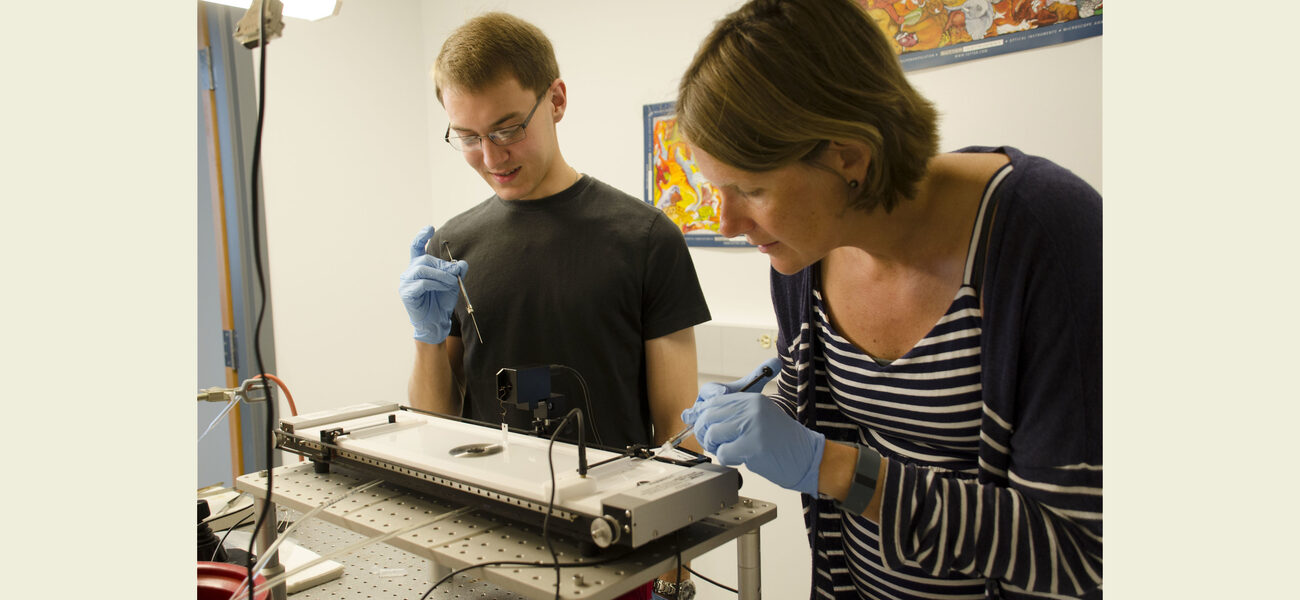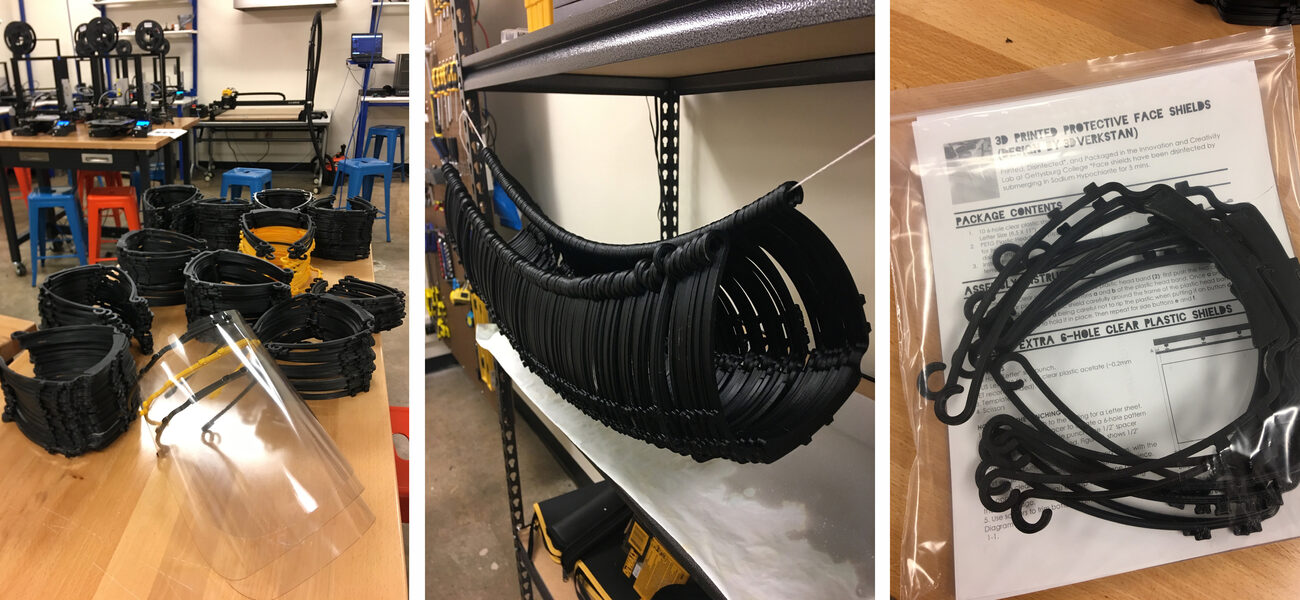Arguably one of the most challenging aspects of planning students’ return to campus has been around teaching labs, where working hands on, in groups, for hours on end is paramount to the learning experience. Solutions to help prevent the spread of COVID-19 vary among institutions, depending largely on the facilities they have available to them, but commonalities include more PPE, shorter lab sessions with fewer students, and a lot more solo work, supported by remote learning.
“The first thing we need to do is get people as far apart as possible,” says Laura Meyer Chapman, manager of biosafety programs at Augusta University in Georgia, which recently instituted a requirement to wear masks. “We are taking a risk-based approach. The masks don’t replace social distancing; they are in addition.”
“We set an occupancy of a room based on the ability to start out social distancing of 6 feet, and then add the PPE for the activities that bring them closer,” says Chapman.
In one example, students are taking the microbiology lab and the blood lab in the same semester on opposite days in labs that are across the hall from each other. “We moved half of the equipment from the micro lab over to the blood lab and vice versa, so that they can use both labs to teach at the same time, splitting the students over two classrooms,” says Chapman.
Changing venues isn’t always possible. The College of Engineering at the University of Wisconsin Madison has electronics design and programming labs with as many as 90 students, but the hardware they use is so specialized that it can’t simply be moved to another space, says Jesse Decker, director for safety for the College of Engineering.
And while the college is attempting to decrease the capacity of labs by 40 to 50 percent, some labs had to drop from 12 students to four because of the size and configuration of the spaces, says Decker. In addition to the physical distancing, all students and instructors will be wearing PPE.
“If we can maintain 6 feet of distancing at all times, generally we are just going to follow campus guidelines requiring masks all day,” says Decker. “Students and instructors in classes where close interactions are necessary, such as learning how to use electron microscopes, will be wearing face shields in addition to their masks.”
Medical Sciences
Perhaps the most challenging labs to accommodate for COVID-19 are in the medical sciences, where simulations with live patient volunteers are often required.
Augusta University has schools of medicine, dentistry, and allied health, which includes undergraduate- and masters-level clinical lab science, occupational therapy, physical therapy, respiratory therapy, and nutrition.
Respiratory therapy and dental students, not surprisingly, are at a particularly high risk for exposure. The dental program is recommending that all students wear N95 masks. “There’s no way around it, other than to say they’re going to practice on each other,” says Chapman, who concedes that she is concerned about the availability of N95 masks. “Dental hygienists will be very dependent on their ability to secure PPE,” she says. “Our hospital has a process for disinfecting and reusing N95s. If we can get them, the hope is that we can tap into that process.”
Respiratory therapy students have the same concerns. “The student pair up, and one is the therapist and one is the patient,” explains Chapman. “The patient has to come out of their mask to perform whatever test, and they all involve lots of air being expelled at high speeds.” The respiratory therapist in that scenario will require an N95 mask, and only one pair of students will be in the room at a time.
Fewer Students, More PPE
Maker spaces, by definition, provide hands-on experiences that cannot be replicated with videos and distance learning. They also frequently contain equipment that cannot be moved elsewhere, so the best alternative is to reduced access to the space.
The University of Wisconsin Madison has a large machine shop that is open to all College of Engineering students, and a maker space open to all students across campus. Previously, students could access those spaces without a reservation.
“Now the use of this space will be strictly reserved for those using pieces of equipment for an allotted amount of time, and when you’re done, you’re expected to leave,” says Decker. “It does reduce some of the comradery typically experienced in these spaces, but we’ll end up with a large reduction in overall occupancy.”
With 50 percent of the classes being taught online, other classroom spaces can be made available for labs, says Decker, and extra sections will be scheduled on evenings and Saturdays. Everyone will be wearing masks, and face shields will be added for work that must be done closely.
At Gettysburg College, face shields are being made on site. Joshua Wagner, director of the Innovation and Creativity Lab, has made about 1,500 face shields since March, using the lab’s 3D printers for the frame and laser cutters for the clear plastic shield. He started out supplying local hospitals and first responders, and now is making enough for everyone on campus who needs one.
Programmatic Changes
Returning safely to teaching labs will require changes in pedagogy, as well as physical space. Transmission of COVID-19 is a factor not only of how close people are to one another, but how long the exposure lasts. In response to that, institutions are shortening the length of time students and faculty spend in a lab, in addition to reducing the density.
“We revisited the learning outcomes and targeted skills we have for our laboratories and decided that we can achieve a majority of them by halving the time students are physically in the lab,” says Timothy Funk, Ph.D., professor of chemistry and chair of the chemistry department at Gettysburg College. His department split the four-hour labs into two two-hour sections, allowing them to teach the same number of students in the same amount of time. “Clearly it means we needed to edit many of our labs to fit cleanly into a two-hour increment, but we decided we could still prepare students for upper-level labs and give them a majority of the required skills using a shorter lab time.” Certain experiments that require more than two hours to complete will be taught over two weeks.
Shelli Frey, Ph.D., professor of chemistry at Gettysburg College, typically has her biochemistry students work in pairs. This semester, partnering will be limited to the data analysis and write-up portion of the lab, and it will be done virtually. As an educator, she is concerned about students missing out on the experience of working side-by-side with a collaborator, but as a scientist, she knows that opportunity is rarely afforded to researchers, anyway.
“We are trying to maximize the hands-on component of the lab in a safe manner and use the rest of the lab time to develop other types of skills and address other learning outcomes—focusing on data analysis, computational techniques, using databases, or science writing,” she says. “We talked about the fact that all of us as faculty have collaborators, and how often do I collaborate with another person while physically in the same space? Not very often. We will build on how to collaborate and how to communicate through email and Zoom.”
Many institutions are using recorded materials in place of hands-on lab instruction to explain lab techniques and the use of equipment.
“Normally, everybody would be gathered around the instrument,” says Frey. “Now that information will be covered in a recorded video you can watch ahead of time to prevent the whole physical clustering in the lab.”
Julia Krout, liaison and staff development specialist at NYU Langone Health, trains novice researchers on the proper way to handle mice and rats. Students in those sessions now must maintain a 6-foot distance, replace their surgical mask with a Delta Plus mask, and add a face shield, as well.
“In an effort to decrease the amount of time we spend in the room, all attendees have pre-training materials and watch a video before coming to class, so I don’t have to talk as much,” says Krout. Toward that end, she eliminated some of the more time-consuming procedures from the in-person curriculum.
Krout also can’t have her students join her in the animal holding rooms because they are small spaces with a greatly reduced room capacity. That makes it harder to test their proficiency in animal care, and to demonstrate how stacking the cages can cause a build-up of carbon dioxide.
Those restrictions are a common challenge. “There are a couple of classes where the primary goal is a student group project,” says Decker, of Wisconsin’s College of Engineering. “In those instances, we are looking at how much they can do at 6-foot distances. They can design everything online, and instead of meeting in person every week, they’ll be in their dorms or apartments on laptops. And the build portion will take place much later in the semester, closer to Thanksgiving. It will limit the amount of time that the students will be together for longer hands-on work sessions. We will also be providing students with face shields in addition to their masks.”
But they will probably have to completely forego some of their standard biomedical engineering projects. One example of this is a project to create a biofeedback device for use in training patients on good breathing techniques.
“We’re not going to be able to do a project like that this year,” says Decker. “We will have alternate research and design projects for the undergraduates. The projects where you would have very close face-to-face personal interaction, those just won’t happen. We need to be even more creative.”
“We might not be doing things the same way, but we’re trying to capitalize on the situation, to create opportunities,” says Frey, of Gettysburg College. “We’re trying to develop other skills.”
“I would argue that this is one of the most challenging aspects of our changes this year,” says Funk, her department chair. “We will use screencasts and other prerecorded resources to show students how to perform certain techniques, but that does not replace in-person assistance.”
By Lisa Wesel

